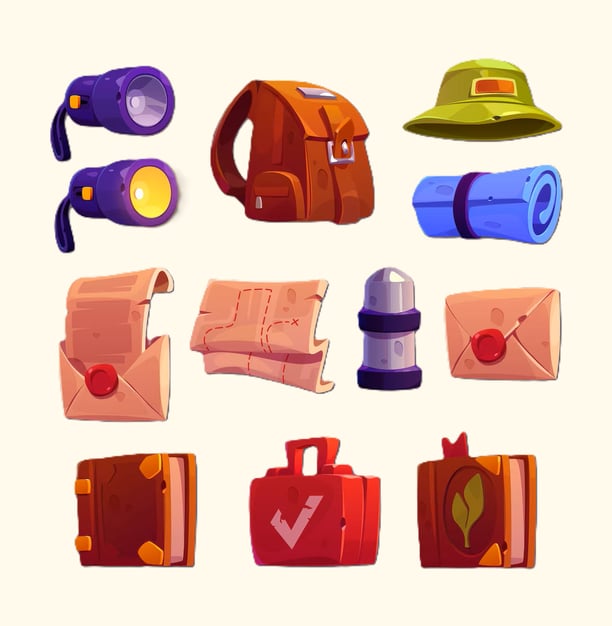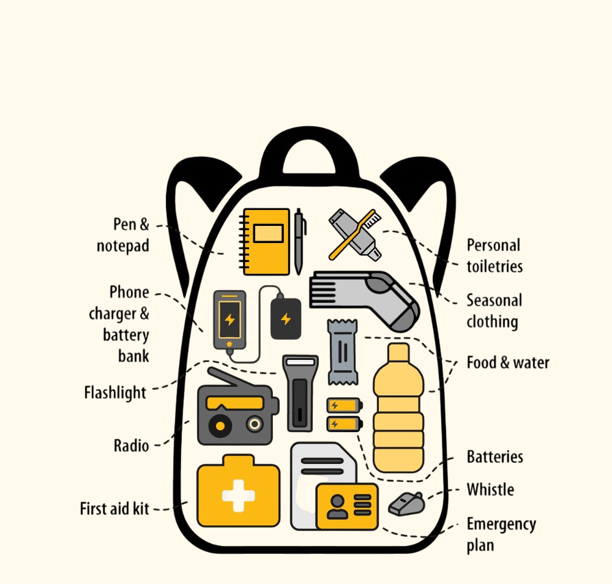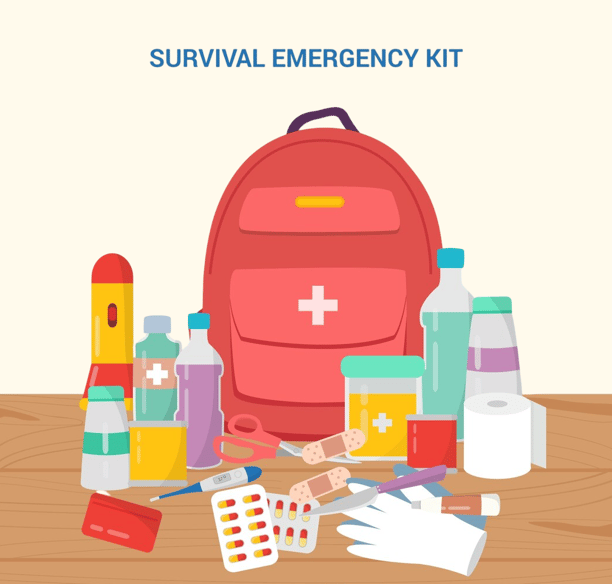Emergency Bag
Blog post description.
HAVE AN EMERGENCY PLAN
12/26/20243 min read
Emergency Bag
A "go-bag" is a pre-packed emergency kit designed to sustain you and your family for at least 72 hours during a crisis. It should be portable, lightweight, and contain the essentials for immediate survival needs like food, water, safety, and medical care. Below is a detailed explanation of how to prepare an effective go-bag and what items to include.


1. Why a Go-Bag is Crucial
Rapid Evacuations: Emergencies like natural disasters, conflicts, or fires often require quick evacuations. A go-bag saves time.
Self-Reliance: Provides basic necessities when access to stores, utilities, or services is unavailable.
Flexibility: Prepares you for different scenarios, whether staying in a shelter, moving on foot, or waiting for rescue.
2. Essentials to Include in a Go-Bag
A. Food and Water
Water:
At least 3 litres per person per day (for drinking and basic hygiene).
Water purification tablets or a portable filter for long-term use.
Food:
Non-perishable items like protein bars, canned food, nuts, dried fruits, or freeze-dried meals.
Lightweight and high-calorie options are ideal.
Utensils:
Collapsible bowls, utensils and a small manual can opener.
B. Clothing and Shelter
Clothing:
Weather-appropriate layers, including thermal underwear, socks, and gloves.
A waterproof jacket or poncho.
Shelter:
A compact tent or tarp.
Emergency blankets (thermal blankets) for warmth.
Lightweight sleeping bag or bivvy sack.
C. Tools and Equipment
Multi-Tool or Knife: For cutting, repairing, or opening items.
Fire-Starting Kit:
Waterproof matches, lighters, and fire starters like cotton balls dipped in petroleum jelly.
Flashlight and Batteries: Preferably hand-crank or solar-powered flashlights.
Duct Tape: Useful for repairs and improvising shelter.
Paracord: Strong and versatile for tying, building, or securing items.
Compass and Maps: Regional maps in case electronic navigation fails.
D. Personal Items
Personal Identification: Passports, driver’s licenses, and copies of important documents in a waterproof pouch.
Cash: Small denominations for emergencies where digital payments are unavailable.
Family Photos: Useful for identification and morale.
E. Hygiene Supplies
Sanitation Items:
Wet wipes, hand sanitiser, and biodegradable soap.
Compact towel and toothbrush with toothpaste.
Toilet Supplies:
Portable toilet bags or a small trowel for digging a latrine.
F. First Aid Kit
Basic Items:
Adhesive bandages, gauze, and medical tape.
Antiseptic wipes and antibiotic ointment.
Medications:
Personal prescriptions with dosage instructions.
Pain relievers, antihistamines, and anti-diarrheal tablets.
Tools:
Tweezers, scissors, and a thermometer.
Emergency medical guide or first aid manual.
G. Communication and Navigation
Emergency Radio: Battery-powered or hand-crank to receive weather and emergency updates.
Whistle: To signal for help in noisy environments.
Phone Charger: Solar-powered or hand-crank options.
H. Special Considerations
Children and Infants:
Diapers, formula, baby food, and small toys for comfort.
Elderly or Disabled Individuals:
Mobility aids, extra medications, or hearing aids with spare batteries.
Pets:
Food, collapsible bowls, leash, and waste bags.
3. Assembling the Go-Bag
Bag Selection:
Use a sturdy, water-resistant backpack for portability.
Ensure it’s large enough to fit essentials but manageable to carry.
Organization:
Use smaller waterproof pouches or zippered bags to categorize items (e.g., food, first aid, tools).
Keep frequently used items easily accessible.
Personalization:
Tailor the bag’s contents to your specific needs and environment.
4. Maintaining the Go-Bag
Regular Updates:
Replace expired food, water, and medications.
Update clothing based on seasonal changes.
Periodic Checks:
Test tools and electronics to ensure they work.
Reevaluate your needs periodically, especially after major life changes.
5. Additional Tips
Duplicate Go-Bags: Keep one at home, one in your car, and one at your workplace.
Practice Using Items: Familiarity with tools like fire starters or water purifiers increases confidence during emergencies.
Inform Family Members: Make sure everyone knows where the go-bag is and what it contains.
A go-bag ensures you have the essentials to survive the critical first 72 hours of an emergency.
Customize your bag based on your family’s needs, local climate, and potential risks.
Regularly check and update the contents to keep them ready for immediate use.
Being prepared with a well-stocked go-bag can make a significant difference in how you navigate emergencies, providing safety, comfort, and peace of mind.




